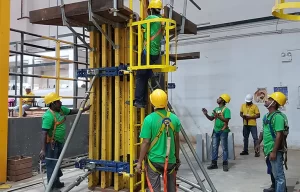Step into the time machine and travel back to a world where hand-drawn animations were king, and watch as they evolve into the captivating visuals we see today. From its humble beginnings to its present-day dominance in popular culture, 2D animation has come a long way indeed. Join us on this exciting journey through history as we explore how this timeless art form came to be and discover how it continues to shape our imaginations today!
2D animation is the process of creating animated images on a two-dimensional surface. The most common 2D animation technique used today is called frame-by-frame animation. This involves drawing each frame of the animation on a separate piece of paper, then photographing the frames and stringing them together to create the illusion of movement.
Hand-drawn 2D animation is a labor-intensive process, but it can produce very expressive results. Computer-assisted 2D animation is much faster and easier to create, but it can sometimes lack the personal touch that hand-drawn animation has.
2D animation has been used for centuries to tell stories and communicate ideas. It was not until the late 1800s that animators began to experiment with ways to create the illusion of three-dimensional space in their 2D animations. The first successful 3D effect was achieved by placing two different images side by side on a single frame of film, which gave the impression of depth when viewed through a stereoscope.
With the advent of computer technology in the 20th century, 2D animation became increasingly sophisticated. Today, 2D animators have at their disposal a wide range of tools and techniques that allow them to create highly realistic and expressive animations.
Historical Overview of 2D Animation
The history of 2D animation is a long and complex one, filled with countless innovators and milestones. It is said that the first true example of 2D animation was created in 1832 by Mary Wollstonecraft Shelley, author of Frankenstein. In an effort to bring her novel to life, Shelley used a series of drawings and primitive animations to create a short film.
While Shelley’s project was ultimately unsuccessful, it did pave the way for future animators. One of the most important pioneers in the early days of 2D animation was Winsor McCay.
Cel animation remained the dominant form of 2D animation until the late 1980s/early 1990s, when computer-assisted animation began to take hold. This new technology allowed animators to create
Different Styles of 2D Animation
2D animation has come a long way since its early days in the late 1800s. The first examples of 2D animation were hand-drawn, often using paper cutouts or stop-motion techniques. Over time, 2D animation evolved to include computer-generated images (CGI) and more advanced techniques such as rotoscoping.
Evolution Over Time
As computer technology has evolved, so has digital animation. The introduction of new software and hardware has allowed animators to create more realistic and lifelike images.
Digital animation has come a long way since its humble beginnings in the 1960s. Thanks to advances in technology, animators are now able to create rich, detailed worlds that look and feel real. With so many possibilities at their fingertips, there’s no limit to what animators can achieve.
The Use of 2D Animation in Modern Times
While 3D animation has become more popular in recent years, there are still many cases where 2D animation is the better choice. For example, 2D animation can be more effective for conveying emotion or telling a simpler story. Additionally, 2D animation can be less expensive and time-consuming than 3D animation.
Despite the rise of 3D animation, 2D animation remains an important part of the filmmaking process.
The Future of 2D Animation
The future of 2D animation is looking bright! We are seeing more and more independent animators and studios creating amazing work using the 2D medium.
This style of animation is very expressive and can convey emotion in a way that CGI often struggles to do.
With the continued advancement of technology, we can only imagine what the future of 2D animation will hold. We can’t wait to see what new and exciting work independent animators and studios will create in the years to come!
Conclusion
The history and evolution of 2D animation is a fascinating story that starts in the late 19th century. It has come a long way since then, with different advancements in technology allowing for more detailed and realistic animations. We are sure that as technology continues to evolve, so will 2D animation, giving us even more exciting possibilities for storytelling.






